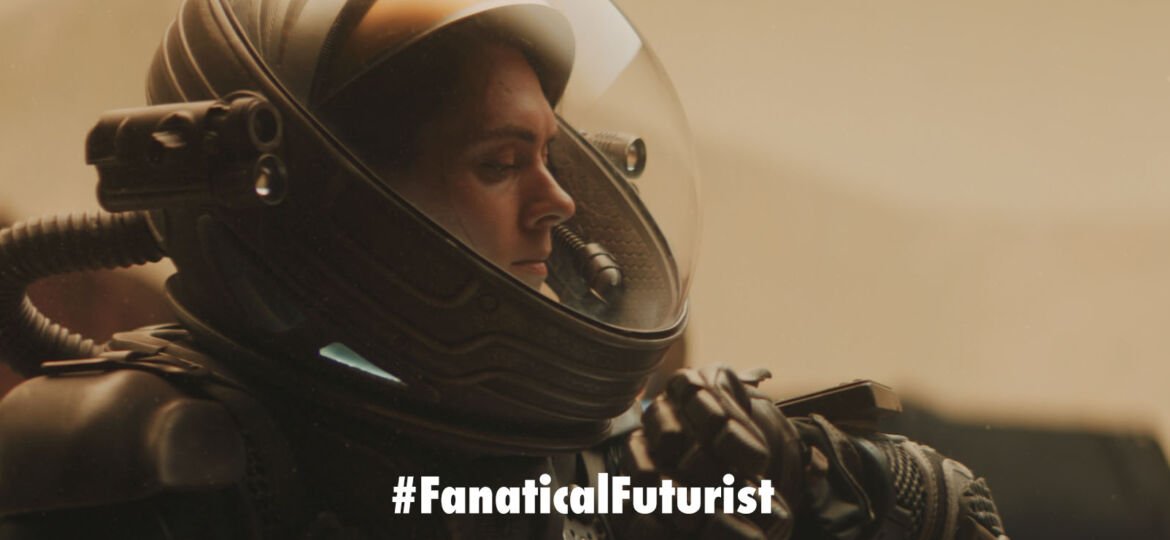
WHY THIS MATTERS IN BRIEF
Being able to produce oxygen on Mars opens the door to Mars based colonies and rocket re-fuelling stations.
 Love the Exponential Future? Join our XPotential Community, future proof yourself with courses from XPotential University, connect, watch a keynote, or browse my blog.
Love the Exponential Future? Join our XPotential Community, future proof yourself with courses from XPotential University, connect, watch a keynote, or browse my blog.
An increasing number of billionaires and multi-national organisations see Mars as humanity’s next great outpost which is why they’re building the spacecraft, fungi-based habitats, fuel dumps, and nanobionic crops to make it a reality. But as good as all this sounds if humanity does want to colonise Mars and become an inter-planetary species we’ll need something else too – oxygen. And now, after another NASA rover called RASSOR successfully mined the Red Planet, NASA’s Perseverance rover has successfully generated breathable oxygen on the red planet. The demonstration, carried out by the rover’s MOXIE instrument on April 20, could lay the groundwork for helping future astronauts establish a sustainable colony on the planet.
Short for Mars Oxygen In-Situ Resource Utilization Experiment MOXIE is a toaster-size device that can convert carbon dioxide into oxygen through a process called solid oxide electrolysis. Martian air is drawn into the device through a filter, and a mechanical pump compresses it down to Earth-like settings, forwarding carbon dioxide to the electrolysis system. The carbon dioxide is heated to about 800 °C and MOXIE itself can withstand this temperature thanks to its heat-resistant nickel alloy parts and a lightweight aerogel that traps heat inside. The gas separates into oxygen and carbon monoxide, and MOXIE isolates the oxygen to a different chamber, where the oxygen ions recombine. The carbon monoxide is released, and we’re left with oxygen.
Making oxygen on Mars from JPL!
During the test it generated about 5.4 grams of oxygen in one hour, which is roughly 10 minutes of breathable air for a human being. Preliminary findings suggest the resulting gas is nearly 100 percent pure oxygen. MOXIE was designed to produce about 12 grams of oxygen every hour, which coincidentally is about the same as what a large tree on Earth produces.
Needless to say it’s an important milestone because future astronauts will need oxygen to breathe and live, provided that is that they’re not genetically engineered as was planned a while ago, and, furthermore, oxygen is also a critical rocket fuel component. A single rocket launch off the surface of Mars carrying four astronauts might require about 25 metric tons of oxygen. The Martian atmosphere is 95-96% carbon dioxide, so there’s a plentiful potential source for this oxygen – we just need the proper technology to generate it. MOXIE is far from capable of fulfilling those needs, but it will lay the groundwork for larger conversion instruments.
And, as for what’s next, there will be at least nine more tests over the next two years. The first round of tests MOXIE is currently running are supposed to validate that the device really works. The second phase will run the process in different kinds of atmospheric conditions and during different Martian times and seasons. And the third will attempt to push MOXIE to its limits.
Perseverance, meanwhile, is continuing to do exciting work. The Ingenuity helicopter had its second flight Thursday and is set to fly at least three more times. The rover will then head on out to start its search for alien life and look for potential samples to store for delivery back to Earth one day.
















